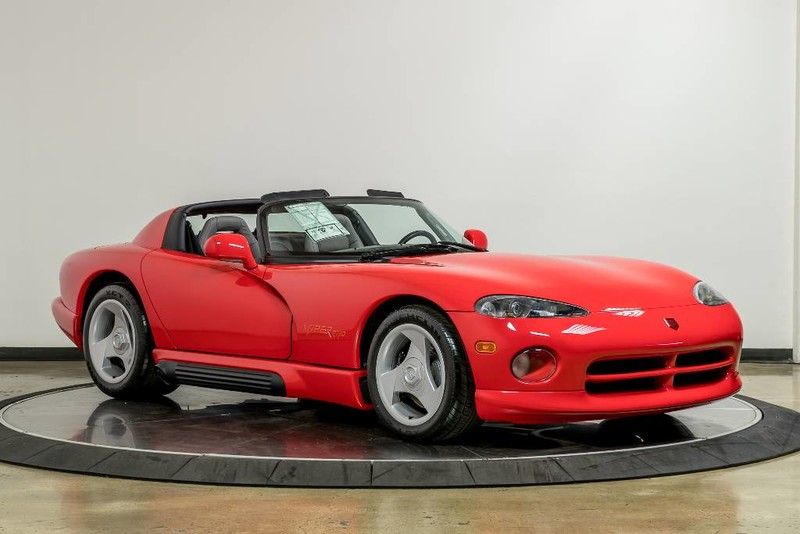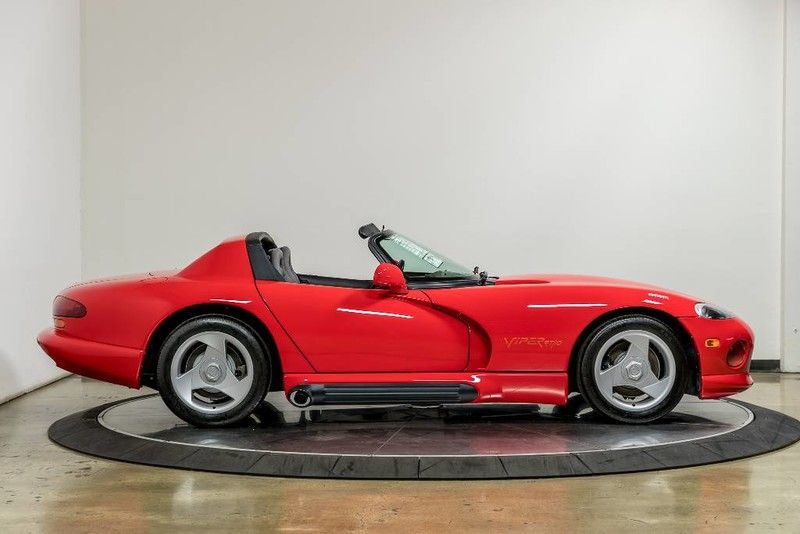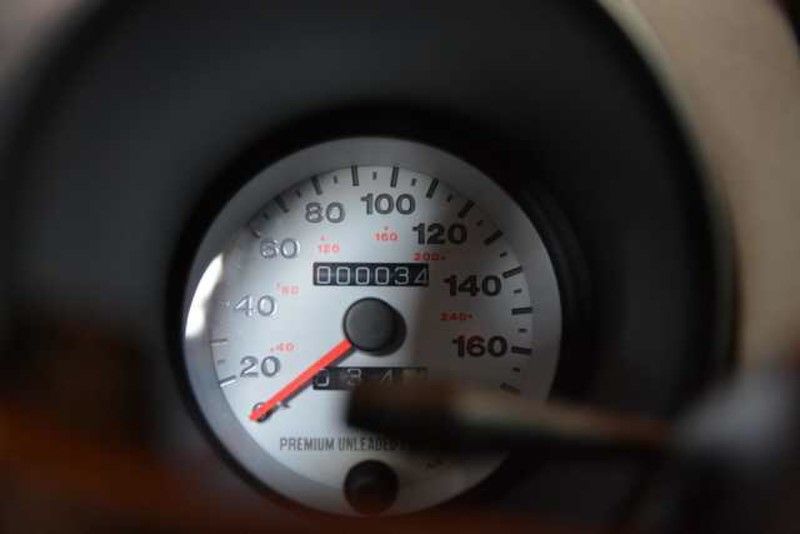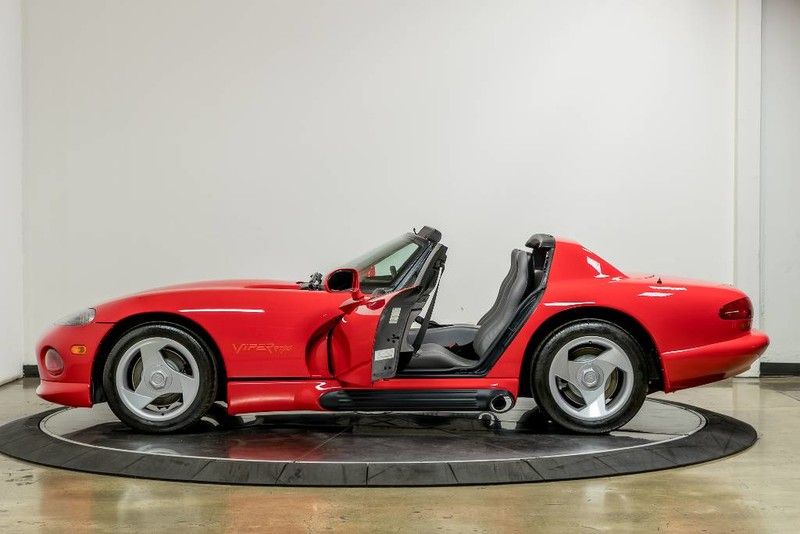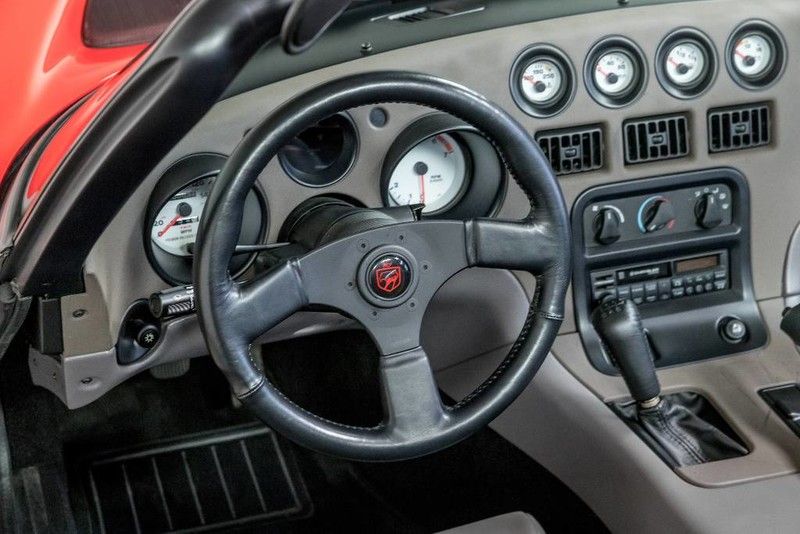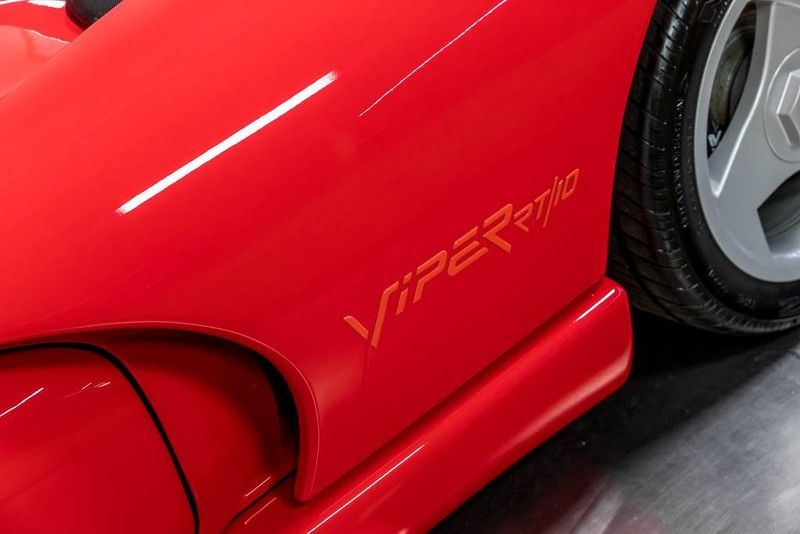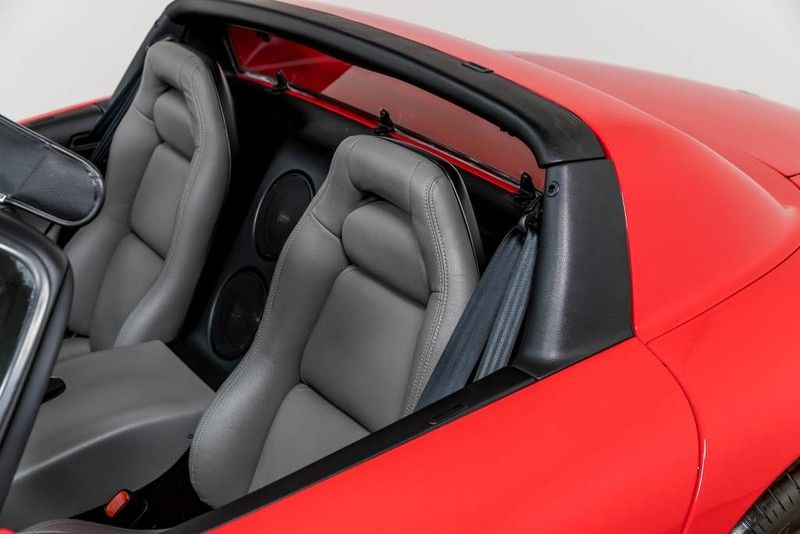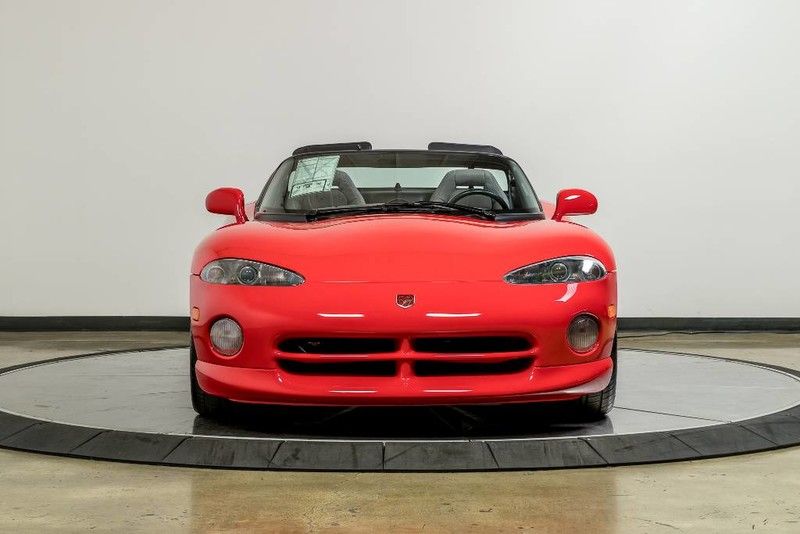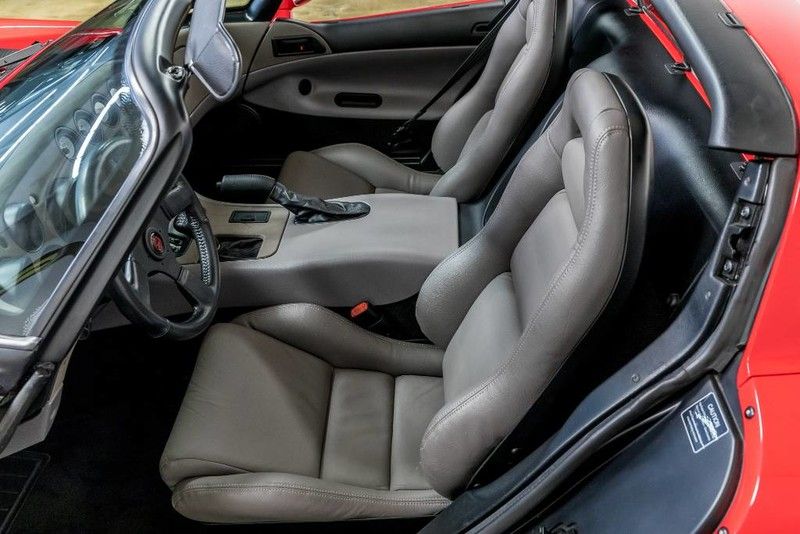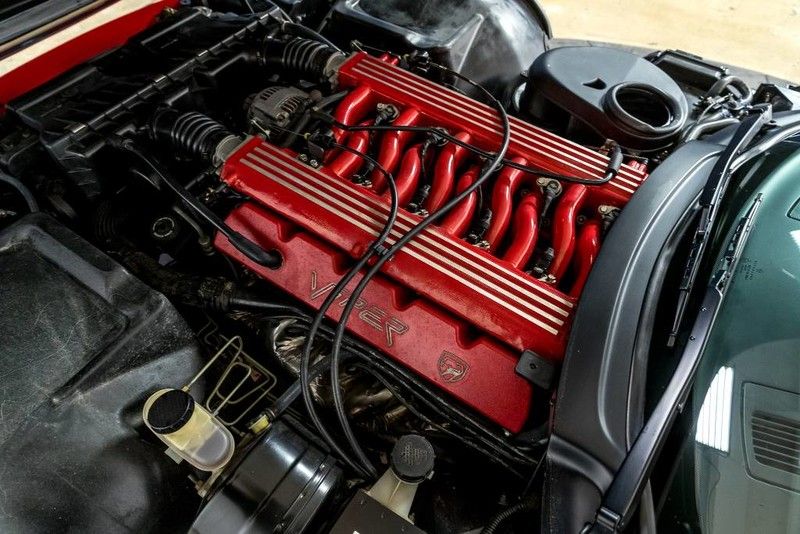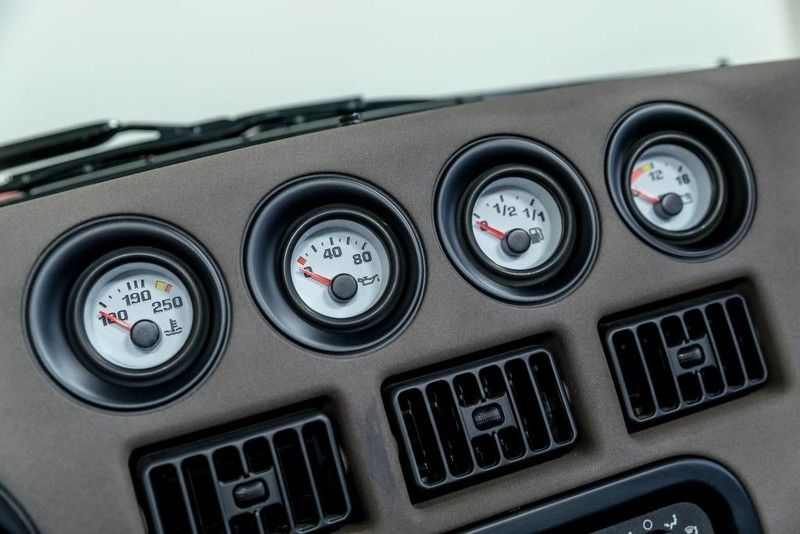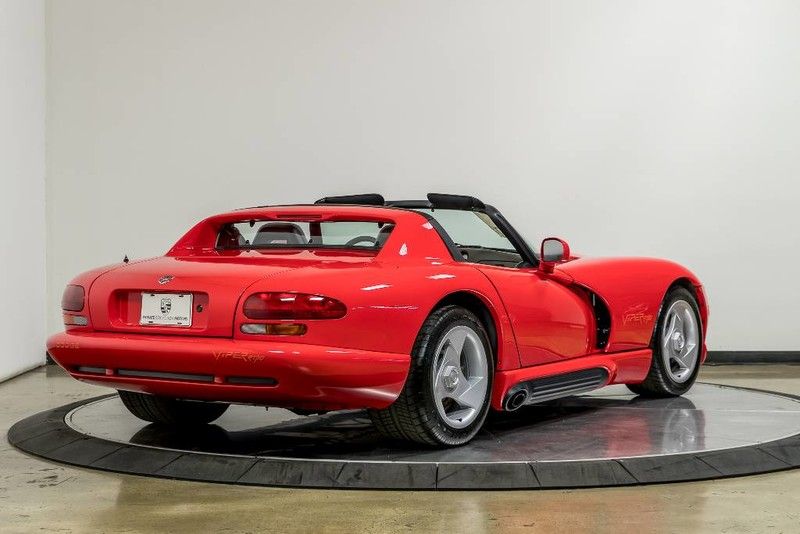The 1992 Dodge Viper was Chrysler's way of saying 'we've now sold enough Minivans to be able to fund an exciting halo car,' which the Viper truly was. Devoided of modern creature comforts or safety features, the RT/10 was a Corvette eater. This red example from the first year of production somehow managed to gather just 34 miles on the odometer and could be yours for just under $100,000.
You barely ever see cars like the Viper come out of the doors of a major manufacturer nowadays. The Viper itself was axed in 2017 because Chrysler couldn't put curtain airbags on it nor was the V-10 monster in demand anymore. With it went the Conner Assembly Plant, and all that's left now are the hopes that somehow, in the future, the Viper will be revived, although that's hard to imagine.
This Forgotten 1992 Dodge Viper Deserves to Be Bought and Driven, A Lot
The Dodge Viper is one of the most recognizable and legendary American sports cars. It's also one that went through an amazing evolutionary process that saw it reach Nurburgring lap record heights on top of a more-than-enviable track record in competition. I mean, how many more modern production-based race cars can you think of that have won the 24 Hours of Daytona outright? I can think of only two others. That's it. But the Viper also won at Le Mans, at the Nordschleife, at Spa-Francorchamps, at Sebring and almost everywhere else in between.
Instead, the Viper was conceived to send shivers down the spine of any mortal who managed to fit behind the steering wheel and who had the guts to push the loud pedal deep enough. That's because it was inspired by another no-nonsense American automotive legend, the Shelby Cobra. Carroll Shelby himself tried to channel the spirit of his creation from the '60s barely a few years after the RT/10 hit the market, but he failed. The Viper, however, succeeded.
The Creation of the Dodge Viper - The Most Down-to-Earth Halo Car That Has Ever Existed
"I was walking down the hall, Bob called me in the office - and it was just a five -minute discussion," said Tom Gale quoted by HowStuffWorks. "I can remember it like it was yesterday. He said, 'I've been thinking more and more. We really ought to kick off doing a project like a reborn Cobra.' That was our intent right from the very beginning." Tom Gale was Chrysler's Chief of Design while Bob Lutz was the President. At the time, in 1988, Chrysler had some of the parts needed to build a sports car like that: it had the tech and, following a clever scheme, it also got around assembling a dedicated group of people to build the car, a group affectionately known as 'Team Viper.' With this being said, the automaker wasn't all that well from a financial standpoint, but we'll get to that later.
Carroll Shelby himself was contacted before the first Viper prototype even turned a wheel as he acted at the time as a consultant for Chrysler. "We sat down about 30 minutes and conceptualized the car," remembered Shelby. " wanted to do what I'd been trying to get done around the company for nine years. In 30 minutes we had the concept. And we ended up with the Viper, where it might have been years before we would have gotten management to agree to build what I was building." Sadly, health problems meant that Shelby played no further part in the Viper story and it wouldn't be until 1998 that his own 'modern Cobra,' the Series 1, would hit the road.
Unreasonable or not, the Viper Concept, called "Copperhead," appeared at the Detroit Auto Show painted in gleaming red and with a narrow windshield and an integrated roll hoop behind the seats. It offered barely four cubic feet of interior space for the two passengers because the engine took precedence. And it was a mammoth of a unit with 8.0-liters of displacement from 10 cylinders. It took the world by storm and people started asking how they could get their hands on one. Some even sent down payments directly to Chrysler and there were even cases of celebrities trying to brine Lutz himself into giving them a spot on the waiting list. However, there wasn't an entry list. The Copperhead was built to gauge people's interest. The work only actually started after Chairman Lee Iacocca gave his blessing for the project, encouraged by the overwhelming success of the prototype.
How did Chrysler move from 'Copperhead' to 'Viper'? "What it was is, you wanted the snake, and we couldn't have 'Cobra,' explained Lutz. "It was as simple as that. You didn't want 'Sidewinder' because it had military connotations and, secondly, you could see all kinds of buff-book headlines with the car going sideways. 'Asp' doesn't sound too good. 'Python' -- they're big and fat, and they swallow pigs and then lie around in the sun for a week. So 'Viper seemed to roll off the tongue easily."
Car & Driver wrote in 1990 that the Viper was built in a different fashion compared to ordinary cars. The whole project was carried to completion by a group of Chrysler engineers selected by Chief Engineer Roy Sjoberg. "It's a small, dedicated team of people behaving as if they were the owners of the Viper Car Company," Lutz said in the article. "They have goals and budgets, and so long as they stay within that framework, they're their own bosses."
So, the Viper wasn't only "the pride of Chrysler engineering" as Castaign put it, but also the test bed for a new kind of management that could make Chrysler money. Team Viper even handled the business of supplying parts, although Lutz offered to help with this delicate matter. Many suppliers shrieked at the idea of the Viper, a car, they thought, will never make it on the road. This is where Lutz stepped in: he argued that suppliers should have trust in the team behind this project and invest in it as if it was a project of their own doing. However, if a supplier flat out refuses to join in, he's free to discuss matters with the President himself over lunch. "I've had only two lunches," Lutz said.
It all seemed to work, and the first test mule was out before the end of '89. Known as 'VM01', it had under the bulging hood a 5.9-liter Chrysler LA V-8 engine. It was the biggest engine Chrysler had at the time, based on a design that debuted in 1971, and it was only to be found in trucks and vans. The second prototype, VM02, featured a cast-iron V-10. This was also a unit meant for trucks, and it was a derivative of the LA 360 V-8 engine.
While long-time Chrysler engine builder Willem Weertman was enlisted to help improve the V-10, it was Lamborghini who proved instrumental in the creation of the production version. Chrysler owned Lamborghini at the time, and Team Viper was thus able to cooperate with Italian engineers as the V-10 made its transition from a cast-iron block to an aluminum alloy one. Lamborghini also aided with the cooling system, the crankshaft's balance, weight reduction, and preliminary fine-tuning. The first aluminum V-10 was about 150 pounds lighter than the cast iron unit.
Team Viper tested the mules at both Road Atlanta and Nelson Ledges.
Is a 1992 Viper With Very Low Miles Worth $100,000?
The history bit tells the story of a group of car guys that put their hands and heads together to create a monster of a car in just three year's time. For the story alone, a 1992 Viper RT/10 is worth it. Is this one worth almost $100,000? Well, in a world where a 1994 Supra sells for over $120,000, the answer could be yes.
Then you've got those doors with their black vertical elements that don't actually hide door handles. In fact, the RT/10 lacks exterior door handles which is why it also lacks side windows. As a result, the soft top comes with soft top-style zip-up side windows which can be unzipped so you can reach the door handle on the interior door panel. A hardtop was also available if you wanted your Viper to look less crude in bad weather. In the rear, bumper extends quite a bit beyond the edge of the trunk lid. On the bumper, you'll the name and model of the car embossed in the sheet metal. Appropriately, the car got its own special badges and unique three-spoke center-lock wheels with 13-inch disc brakes behind.
Inside, there's not much to see. T
That power and torque was sent to the back wheels with their chunky 335/35R tires through a Borg Warner six-speed manual. The torque is enough to spin the wheels in third gear, but the steering is precise, and the gearbox isn't sluggish although the throws aren't the shortest. Car & Driver more recently described the RT/10 as "an elemental testament to the pleasure of mechanized movement" and "a paragon of bizarre perfection."
Is the RT/10 worth $99,885? If you want one of the least used examples you can find, yes. Is the RT/10 worth at all? Also yes. If you don't think it is, I'll direct you again to the words of Bob Lutz: "Viper is not for everyone. This car is only for the enthusiast who wants a great driving car and nothing more."
Of course, it's not a daily driver, and the build quality isn't top notch. Let's not forget that it was basically hand built and five people carried out the building process of each car, assisted by computerized checks. It's also not particularly practical inside, and the brake pedal is way too high for you to heel-and-toe while the whole arrangement is offset to the left.
Further reading
Read our full review on the 1992-2010 Viper
Read our full review on the 2014 SRT Viper

